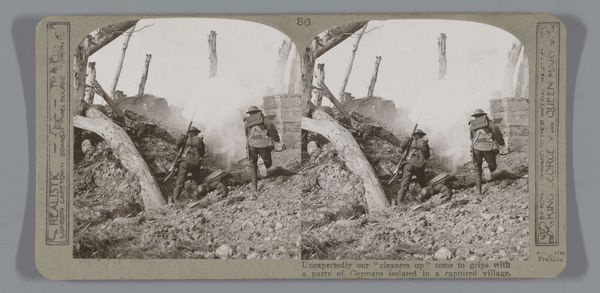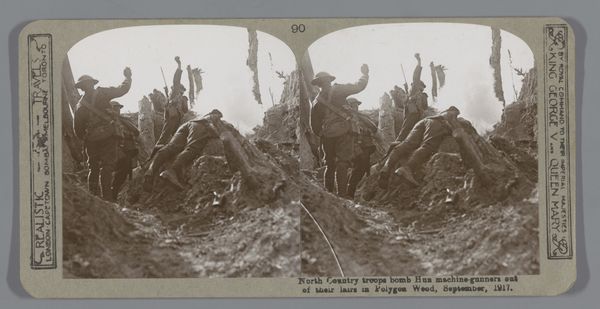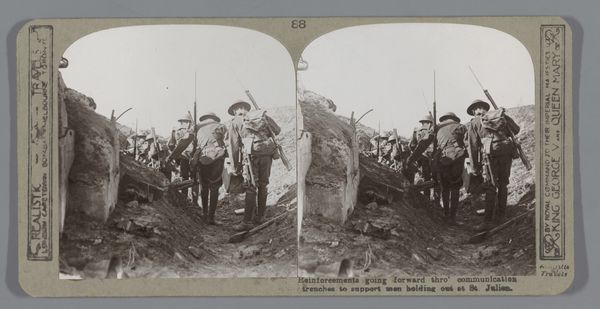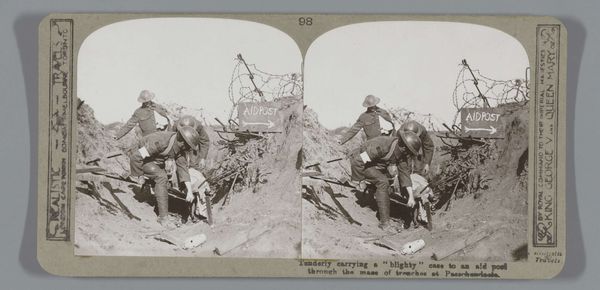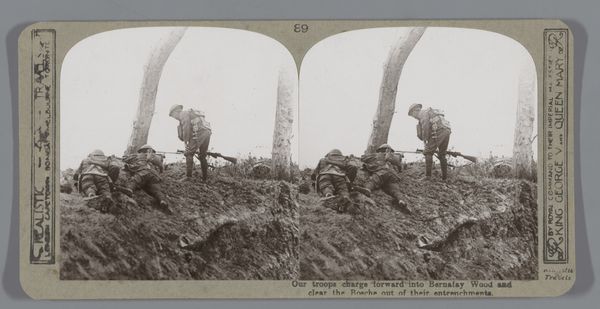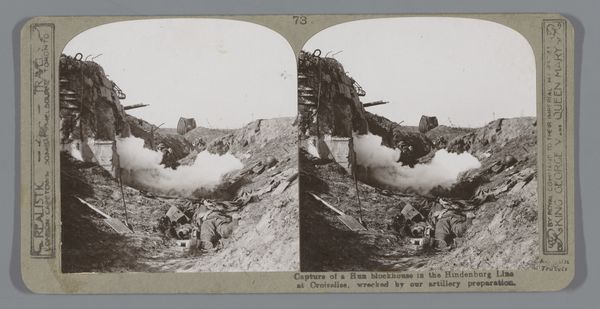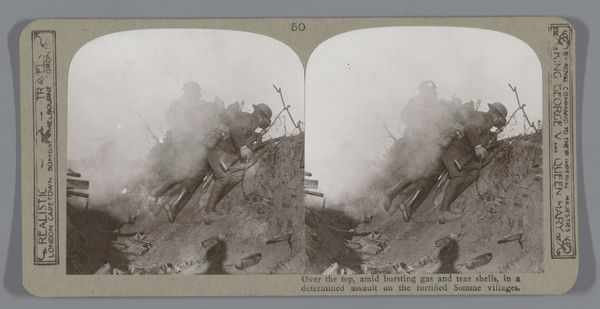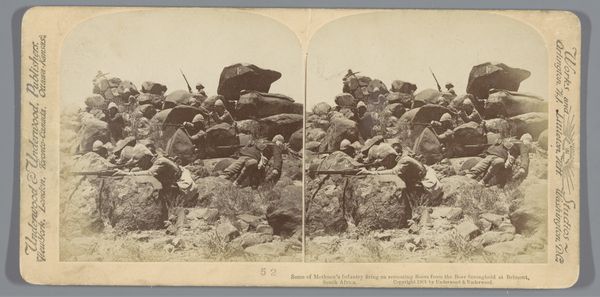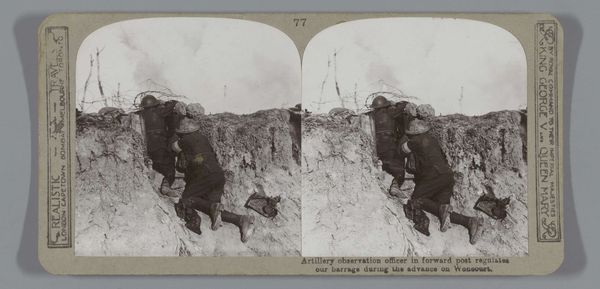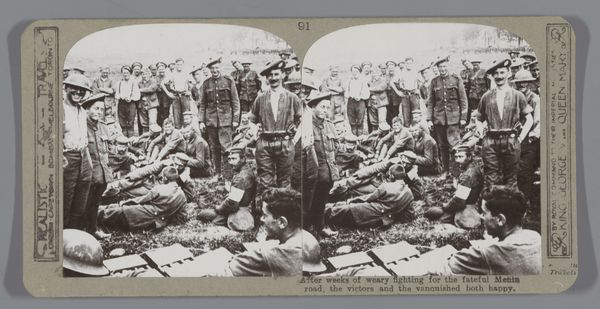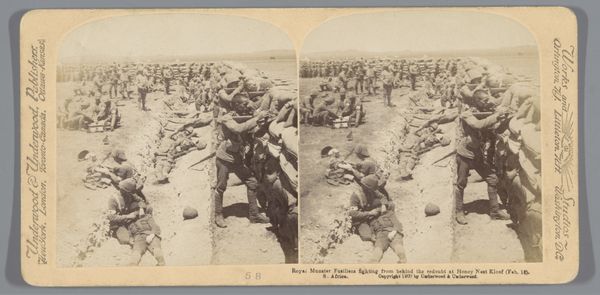
Zero hour! Prompt to the second, our men go over the top in a grand assault on Wytschaete Wood 1914 - 1918
0:00
0:00
Dimensions: height 85 mm, width 170 mm
Copyright: Rijks Museum: Open Domain
Curator: This gelatin-silver print, bearing the title "Zero hour! Prompt to the second, our men go over the top in a grand assault on Wytschaete Wood," captures a chilling moment from the First World War period. The stereo card format, designed for viewing in three dimensions, offers a deeply unsettling look at warfare. Editor: Immediately, the dense atmosphere of the photograph strikes me. The smoke, the confined trenches – it evokes a powerful sense of claustrophobia and impending doom. You can almost feel the tension and fear radiating from the figures. Curator: Exactly. This "Realistic Travels" view speaks to a society grappling with how to visualise and understand the war, employing realism to present it to a wider audience back home. Stereoscopic images like this one presented a version of 'being there' – sanitized perhaps, but impactful nonetheless. Editor: The symbolism is overwhelming. Soldiers poised to climb into what? Certain death, likely. Even the ladder acts as a symbol – a precarious, almost theatrical entrance into the unknown. I imagine the cultural resonance was profound, and heavily reliant upon the romanticised symbolism of war narratives at the time. Curator: I think we have to remember the powerful propaganda machine in Britain at the time that sought to idealise and promote participation in the war effort, and it's influence. Images such as this both reveal and conceal much about that brutal history, feeding both anxieties and a romanticised image. Editor: Absolutely. These images walked a tightrope. On one hand they depicted conflict, on the other, they often omitted the truly grotesque realities, maintaining morale and societal support, ensuring the war machine had an endless supply of manpower and support. Curator: The political forces that shaped images and visual depictions in World War One meant an incredibly skewed perspective when we compare it to contemporary reporting from areas of war today. We can question how this presentation might have shaped the perception of a global audience at the time. Editor: I find it thought-provoking that even through what could be seen as a sanitised lens, symbols of dread and violence can still speak clearly of tragedy today, transcending generations. Curator: Agreed. I come away understanding a little better the socio-political function such images played, both celebrating but also distorting reality for the population at home, while I feel you are drawn to read it’s underlying tragic motifs that endure so powerfully, irrespective of time.
Comments
No comments
Be the first to comment and join the conversation on the ultimate creative platform.
